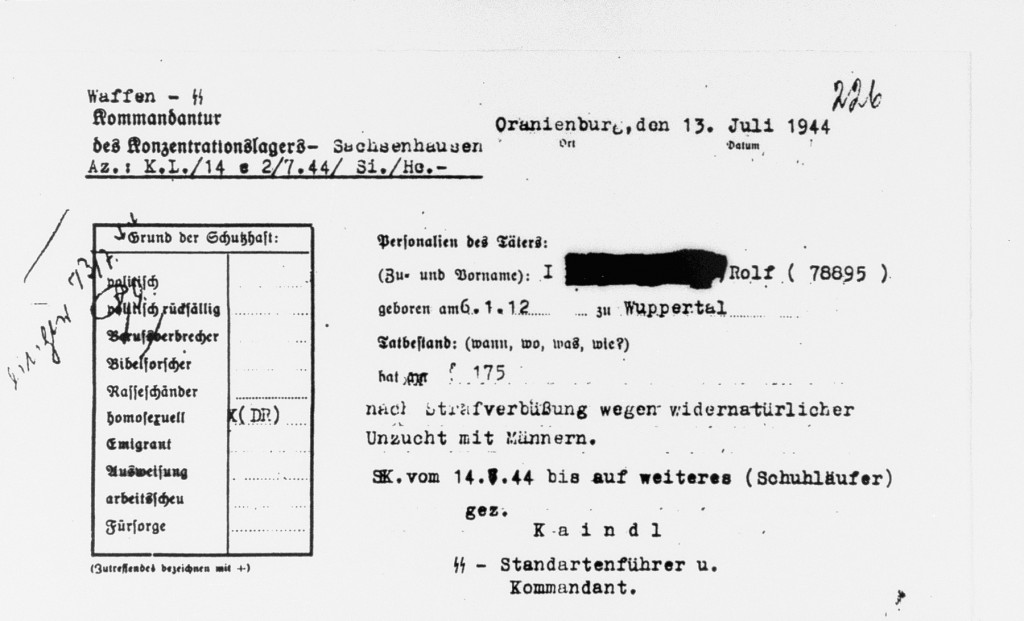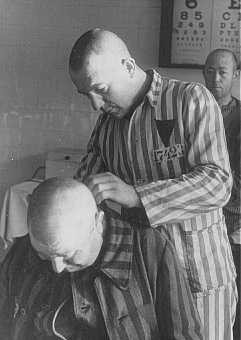
Sachsenhausen: Key Dates
Between 1933 and 1945, Nazi Germany and its allies established more than 44,000 camps and other incarceration sites (including ghettos). The perpetrators used these locations for a range of purposes, including forced labor, detention of people deemed to be "enemies of the state," and mass murder. Millions of people suffered and died or were killed. Among these sites was the Sachsenhausen camp and its subcamps.

July 12, 1936
German authorities transfer 50 prisoners to the Sachsenhausen concentration camp site to begin construction of the camp. By the end of 1936, Sachsenhausen will hold 1,600 prisoners.
SS Lieutenant Colonel Michael Johann Lippert oversees construction of the camp.
October 1936
SS Major Karl Otto Koch replaces Lippert as camp commandant.
November 9–10, 1938
During Kristallnacht (often referred to in English as the “Night of Broken Glass”), the SS and police arrest some 30,000 Jews, imprisoning about 6,000 in Sachsenhausen.
September 1939
German authorities begin arresting Jewish citizens of Poland and stateless Jews living in the greater Berlin area and incarcerate them in Sachsenhausen.
November 1939
Following anti-German demonstrations in Prague in November 1939, German authorities incarcerate around 1,200 Czech students at Sachsenhausen.
Early 1940
SS-Oberführer [an SS rank between colonel and brigadier general, for which there is no English equivalent] Hans Loritz replaces Koch as camp commandant.
May 3, 1940
German authorities deport 1,200 Polish prisoners from the Pawiak prison in Warsaw to Sachsenhausen.
April 1940
A commission of SS doctors begins conducting a “selection” among the prisoners at Sachsenhausen.
June 1941
Camp authorities transport 269 prisoners whom SS doctors selected as unfit to work to the “euthanasia” killing center Sonnenstein to be gassed.

August 1941
Soviet prisoners of war (POWs) begin arriving in Sachsenhausen. Between August and October 1941, German authorities deport about 12,000 Soviet POWs to Sachsenhausen. The camp SS shoots most of them shortly after arrival.
1942
SS Lieutenant Colonel Anton Kaindl replaces Loritz as camp commandant.
October 1942
Camp authorities select prisoners they deemed unfit to work and send them to the Dachau concentration camp.
1944
Camp authorities select prisoners they deem unfit to work and send them to the Bergen-Belsen concentration camp.
August 1944
In response to the Warsaw uprising, German authorities deport 60,000-80,000 Polish civilians to concentration camps, 6,000 of them to Sachsenhausen.
April 21, 1945
SS camp guards begin the forced evacuation of 33,000 prisoners from Sachsenhausen.
April 22, 1945
Soviet forces liberate the Sachsenhausen concentration camp.
October–November 1947
A Soviet Military Tribunal tries 16 Sachsenhausen camp functionaries; all are convicted.
Critical Thinking Questions
To what degree was the local population aware of this camp, its purpose, and the conditions within? How would you begin to research this question?
Where were camps located?
Did the outside world have any knowledge about these camps? If so, what, if any, actions were taken by other governments and their officials?
What choices do countries have to prevent, mediate, or end the mistreatment of imprisoned civilians in other nations?

